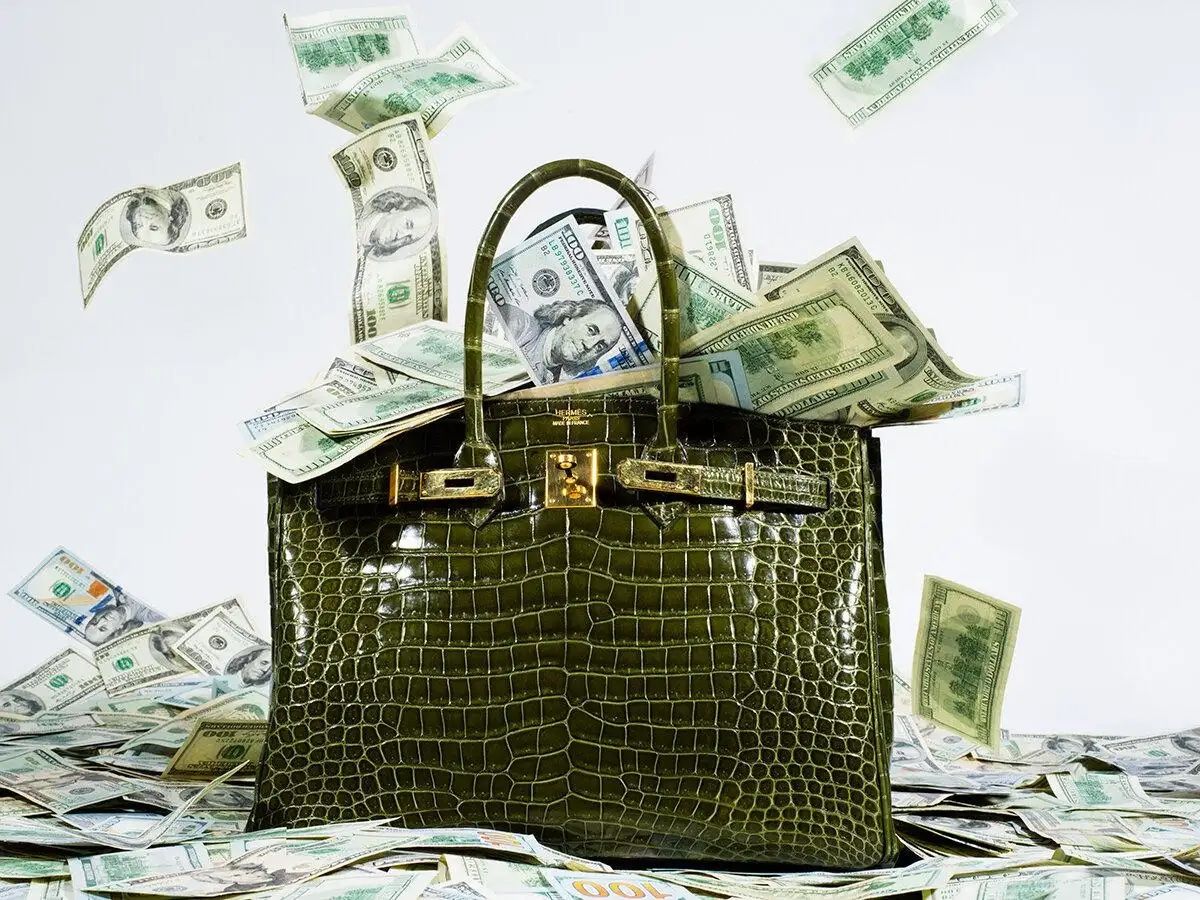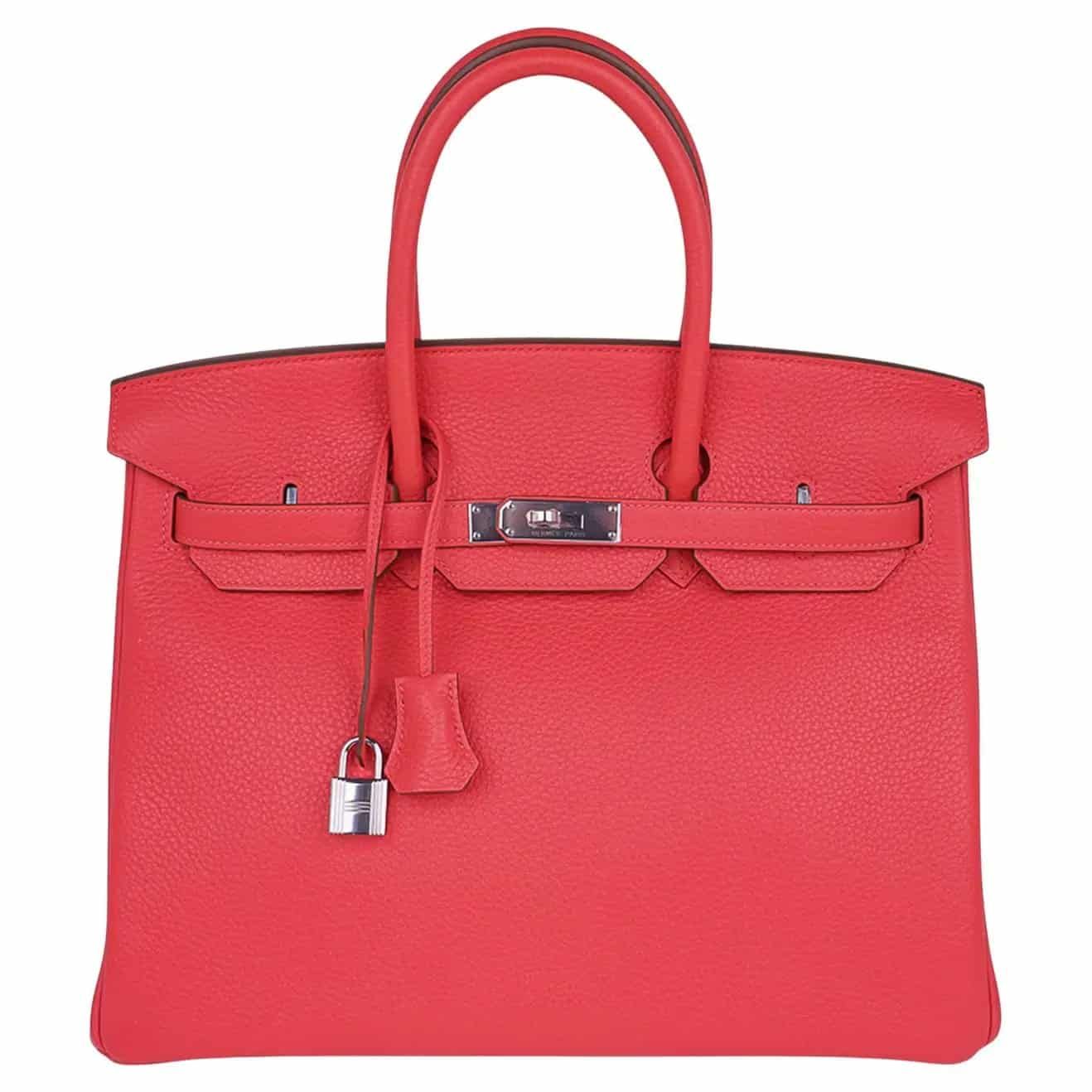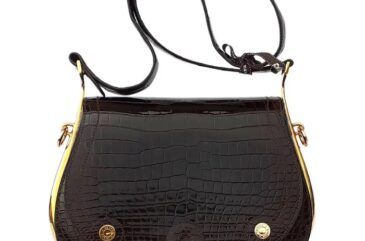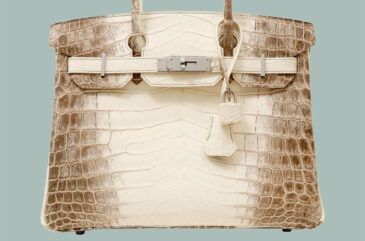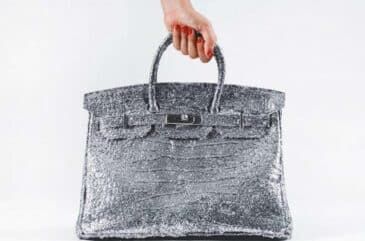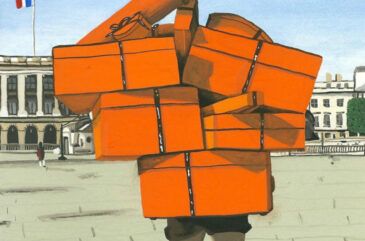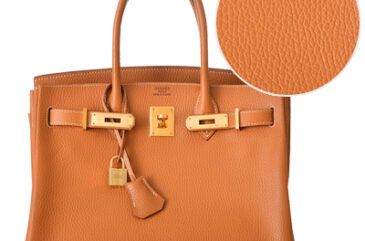On a short flight from London to Paris in 1983, fashion history changed forever. That’s when Jane Birkin accidentally upended her Hermès datebook, scattering papers everywhere.
Who came to her assistance? Only Hermès’s legendary leader, Jean-Louis Dumas, who engaged the actress and singer in discussion for the rest of the flight. He asked Birkin about her dream bag. He took notes. He then brought those notes to the Hermès workshop. Soon, an icon was born.
And one for which people are willing to pay up. A 2017 study found that the Birkin’s price had increased 500 percent, or 14 percent a year, since its introduction. And its value has continued to climb. In 2020, a Himalaya Birkin went for $382,295, making it the most expensive bag ever sold at auction. That record didn’t last long. In 2022, a diamond-studded Himalaya fetched $450,000.
Is it any wonder that counterfeiters love it?
Debra Kent, founder of Mightychic, in Miami, has specialized in Hermès for nearly two decades and is still moved by the luxury house’s craftsmanship, quality and “world of colors.” Nonetheless, she warns, “some of the bags coming out of Italy are so good that even Hermès has a hard time telling.”
To avoid being taken, the first imperative is to “know your seller,” she says. “You have to do your homework. You have to ask questions. You have to see that this is somebody that’s been around for a really long time.” You even need to know who, exactly, your seller is buying from.
And, of course, you must be familiar with the bag itself — especially the details that counterfeiters often get wrong (or, worse, get right). Below, we’ve compiled a list of important features to be aware of when considering buying a piece of history.
Stamp
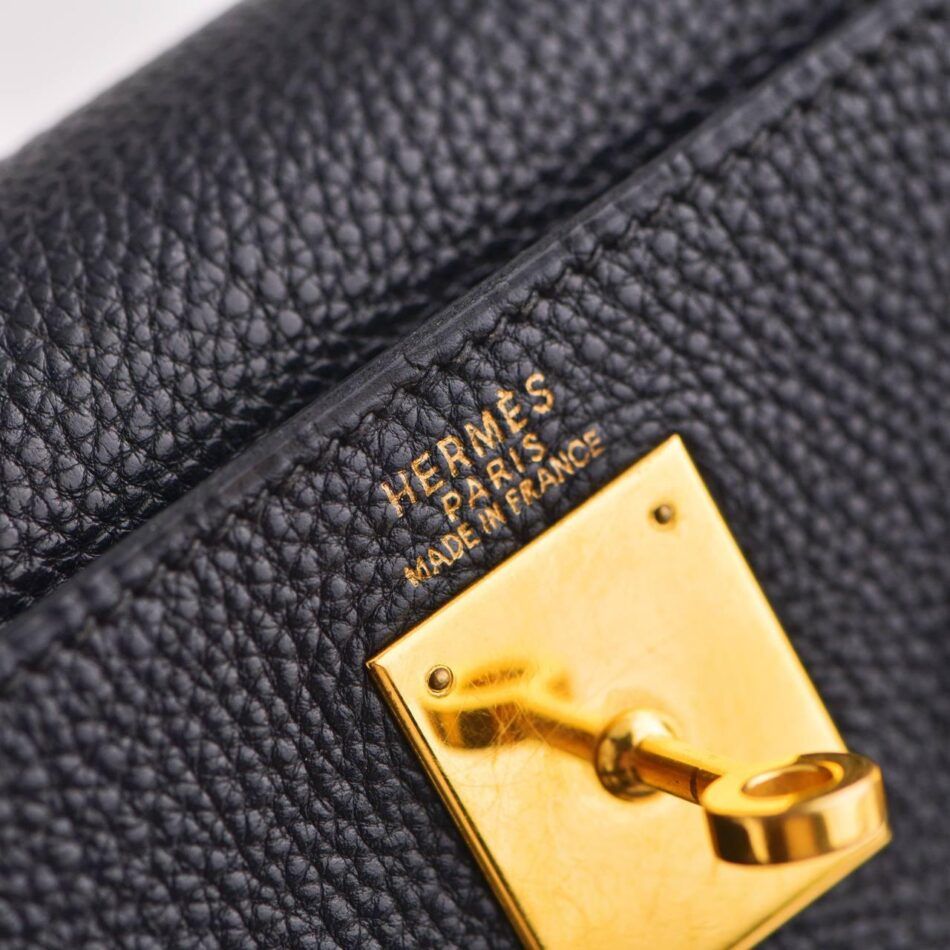
Beneath the front flap of a real Birkin is a phrase dreams are made of: Hermès / Paris / Made in France. Label stamps are lightly pressed into the leather in gold, silver or as a colorless imprint; metallics generally match the hardware. Make sure the accent on the second e is grave: è.
Check that the stamp is perfectly centered and the correct distance from the top (very close to the top stitching), as well as that the letters are clear and fine (not heavy-handed). It shouldn’t look engraved, painted on or irregular.
The label stamp may have additional markings, like ones indicating an exotic leather or a special order (a horseshoe symbol). By familiarizing yourself with the qualities of an authentic stamp, you’ll be better prepared to win a game of “spot the fake.”
Lock
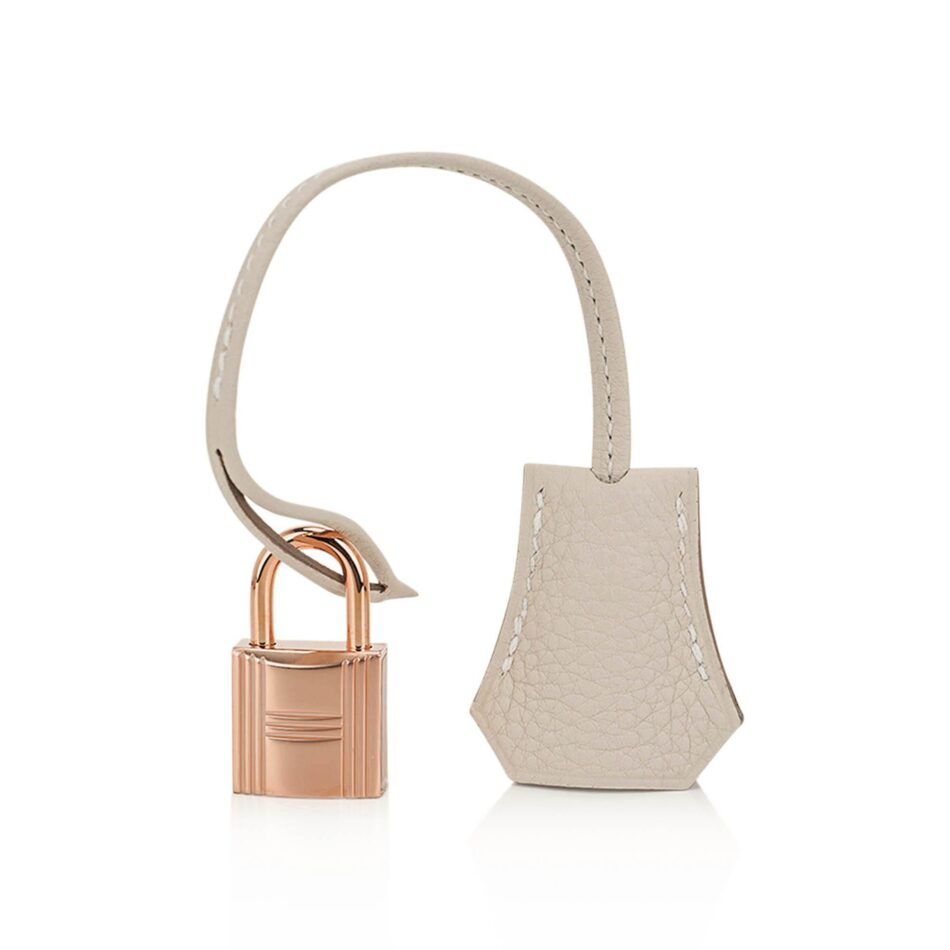
Birkin bags come with a lock and key. Since 2000, both have been stamped “Hermès” and numbered, with matching numbers. Because the style of numbering has changed throughout the years, authenticating through this detail alone is difficult.
Instead, consider the quality of the lock and key and their engravings. The hardware is generally gold or palladium, which lends it a substantial feel. The toggle should move smoothly, and all engravings should be crisp and refined.
Keys are enclosed in a leather clochette that loops through the bag’s handle. Hermès attaches the key directly to a leather band — it doesn’t use a key ring. Check the clochette itself. Is the part that houses the key made of one piece of leather folded at top and sewn at the sides? Or is it two pieces of leather sewn together on three sides. If the latter, the bag is a fake.
Shape
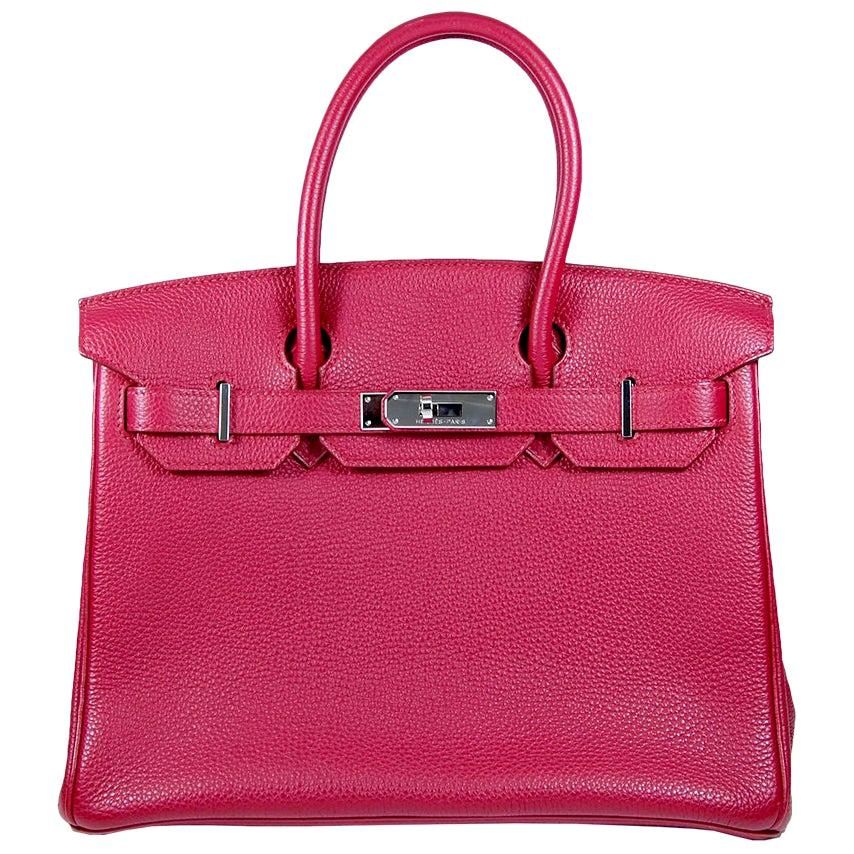
Like the Parisian equivalent of the royal guard standing outside Buckingham Palace, an authentic Birkin possesses a “posture” that sends a message of status and discipline.
An authentic Birkin doesn’t slouch. Or bulge. It’s straight, symmetrical, assured. “It’s perfect from every angle,” says Diane D’Amato, director of luxury accessories at Heritage Auctions.
For each Birkin, Hermès artisans choose only the sturdiest, flawless leather, which enables the bag to maintain its impressive form. (Hermès further ensures this durability by offering a spa in Paris dedicated to the upkeep of its classic bags.)
“Your proportions are important,” says Kent. “Does your handle look too tall? Or the face too round?” Except for bags that are part of a special edition or were customized to suit an individual client’s preferences, Birkins are available on in 25-, 30-, 35- and 40-centimeter sizes, measured across their base. Checking this measurement is an easy way to verify authenticity. Or inauthenticity.
Kent cautions, however, that “sometimes, you get a bag that’s a little bit oversized, a little bit undersized. That’s usually an indication that it’s authentic, because they’re handmade, right, so not every single bag will be exactly the same.”
All Birkin bags have a single compartment and an interior side zip pocket. The handles stand up and will not flop to the sides. The four feet on the base, called clous, are hammered in, allowing it to stand on its own and hold its symmetrical shape — even after years of use.
The Birkin 40 is the biggest of the standard-size bags. It is frequently used for travel or business, since it offers enough space for larger essentials like a laptop or a light change of clothes. The Birkin 35 was the first Birkin bag size, introduced in 1984. Designed by Dumas and Birkin, today it is a status symbol as well as a stylish hold all.
Arguably the silhouette’s most popular size, the Birkin 30 is suitable for holding items like a tablet, scarf and makeup pouch. The Birkin 25, meanwhile, despite being the smallest of the group, accommodates such useful articles as keys, wallet and phone.
Leather
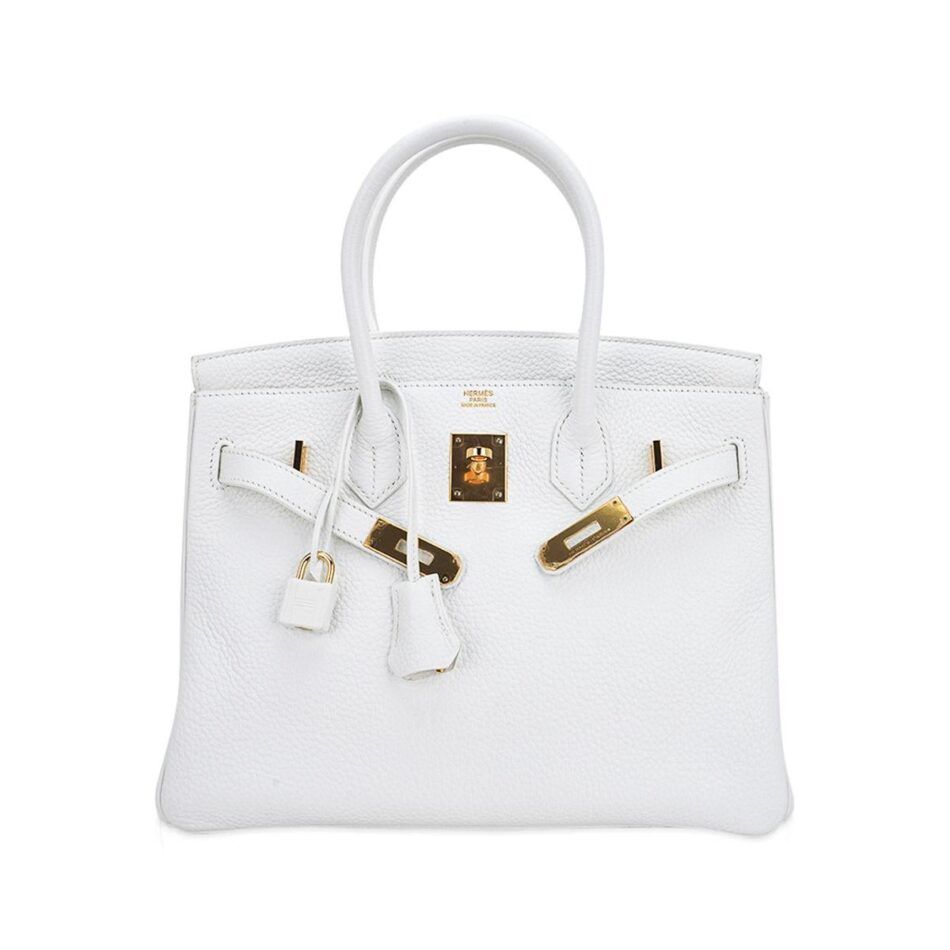
“One of your first giveaways to an authentic bag is the leather,” says Kent. “There’s just nothing like the smell and the feel and the look of an authentic Hermès bag.” Birkins come in a variety of leathers, including box calf, Chamonix, togo, Clemence, Veau Swift, epsom and Fjord. Exotic leathers include alligator, crocodile and ostrich.
“Each year, Hermès creates different colors in different leathers,” says d’Amato. “We make sure that the leather is correct with the color. . . . Not every bag in every color is made in every leather.”
Stitching
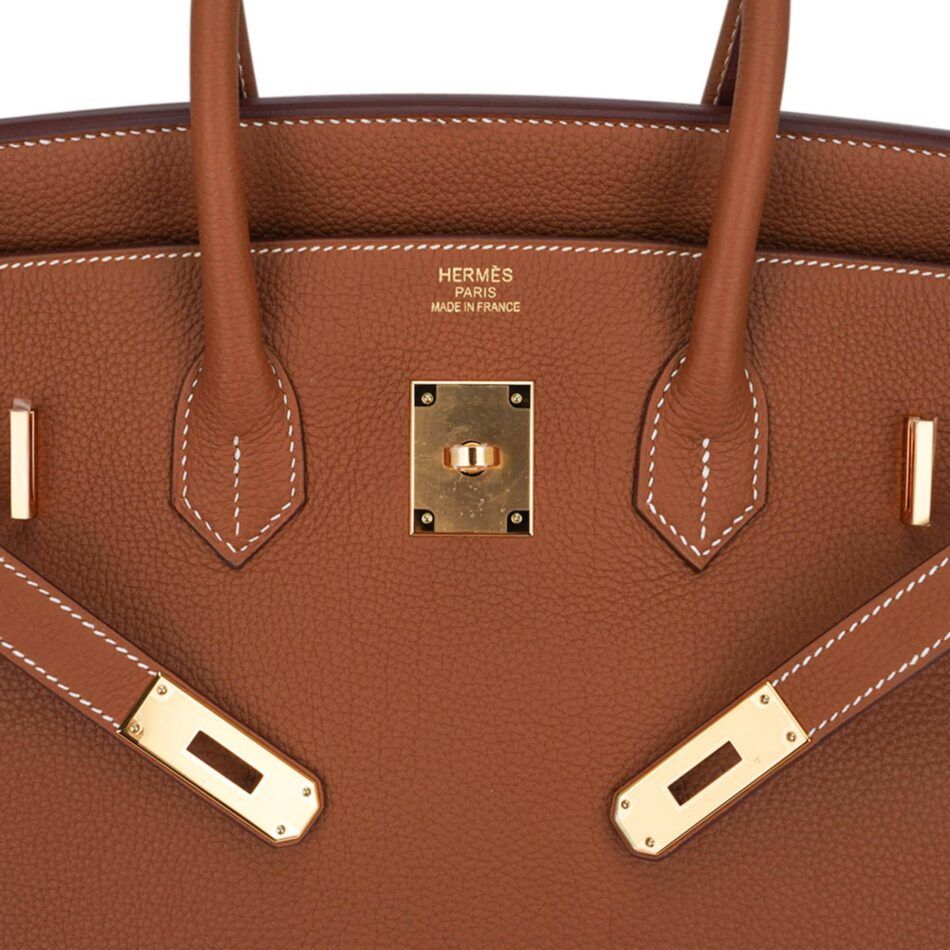
Sewn by an experienced artisan, the stitches on the Birkin are slightly angled, tight and precise. Generally, the thread is the same color as the bag. Since the stitching is hand done, it may have small inconsistencies — but it will never be messy.
Sloppy stitches, with loose or hanging threads, are the work of a counterfeiter, not a lazy artisan. There are no lazy artisans in the world of Hermès.
The Blind Stamp
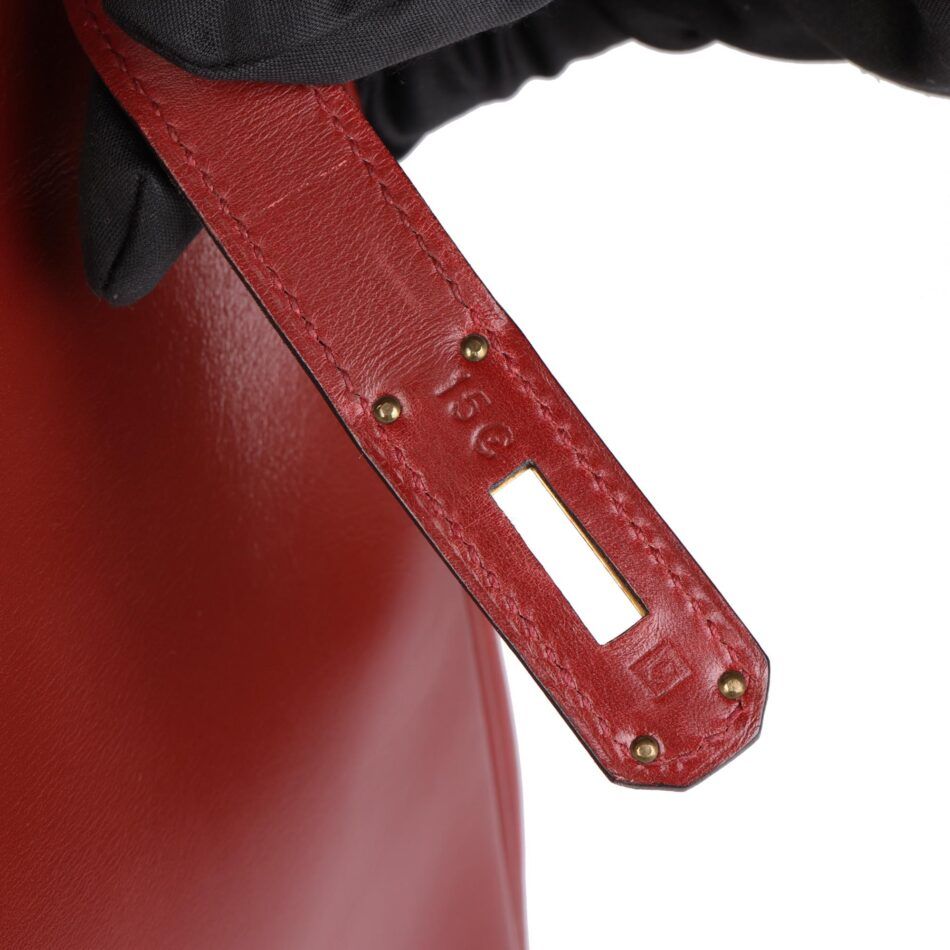
In 1945, Hermès began indicating the years its bags were made using letters of the alphabet, beginning with A, for 1945, and ending with Z, for 1970. A new cycle started in 1971, with each letter set within a circle. That finished in 1996, and from 1997 until very recently, the letters were surrounded by squares. On the Birkin, these symbols were found on the underside of the tab strap.
A couple of years ago, as part of its constant battle against knockoffs, Hermès moved the markings to the inside of the bag and switched its coding system to one that is less transparent. This change caused initial consternation among collectors, but imagine the trouble it’s giving counterfeiters!
Zippers
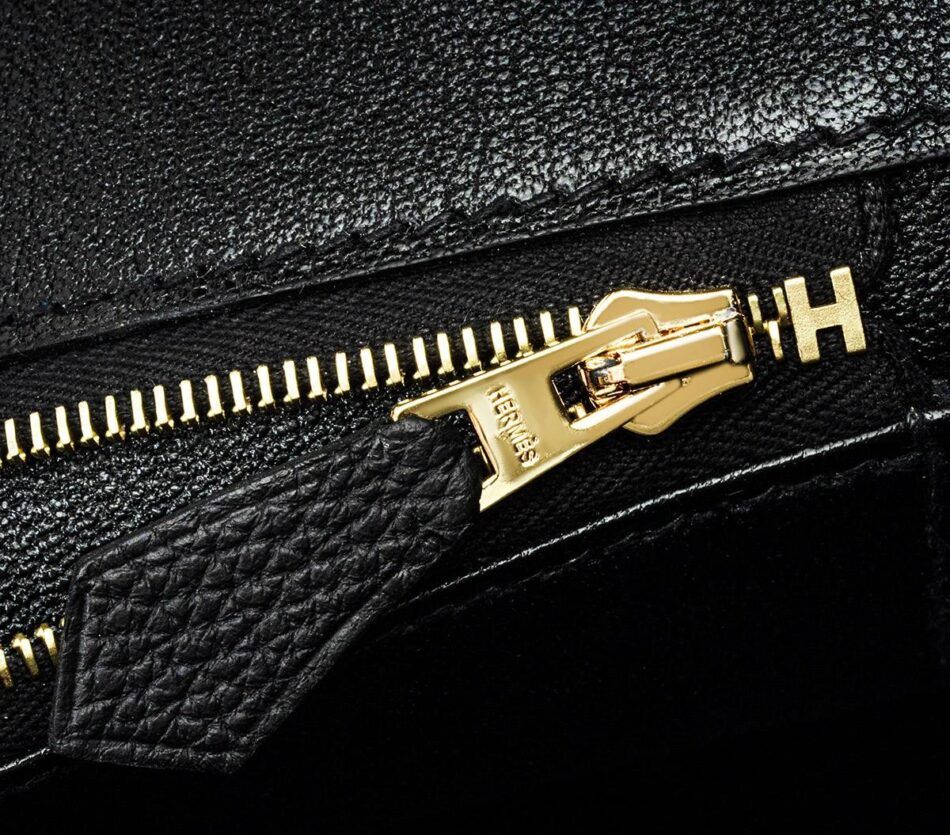
One of the easiest ways to spot a fake Birkin is to take a look at (and a tug on) the zippers. The leather of the pull tab should match that of the rest of the piece, and the underside shouldn’t show any signs of adhesive, which counterfeiters often use to attach tabs to bags.
The metal tab should be engraved with “Hermès,” not YKK or the name of any other zipper maker, and it should never dangle down. Like all engravings on Birkin hardware, the text on the zipper should be clean, elegant and centered on the tab, not slapdash or thick. Counterfeiters have been known to get this right, however, so you might also want to assess the zipper’s action.
Zipping a Birkin should be a luxurious experience, whether it’s vintage or was crafted in 2023. The motion should be smooth, easy and uniform. The zipper should never catch or feel stiff when you open or close it.
The process should convince you that a highly trained artisan sat with that bag and that zipper, tested it for perfection and was ultimately satisfied.
Authenticity Card
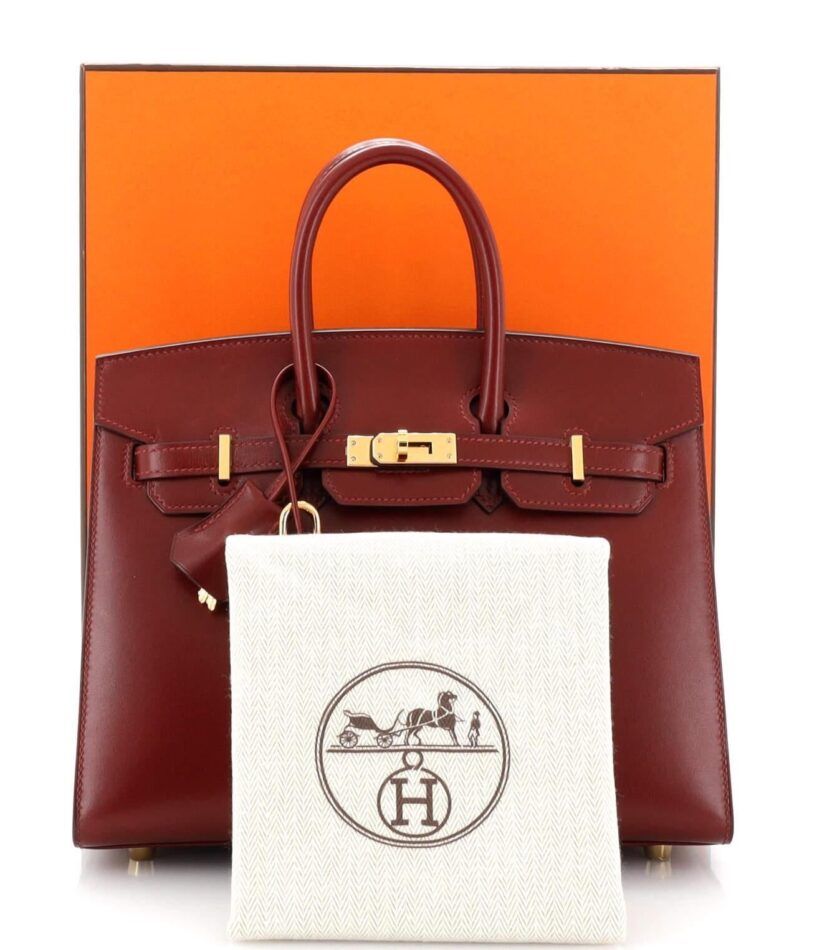
Hermès has never provided an authenticity card with its bags. Counterfeiters do, however. The same goes for hang tags — they don’t exist in the authentic world. Keep that in mind.
The Base
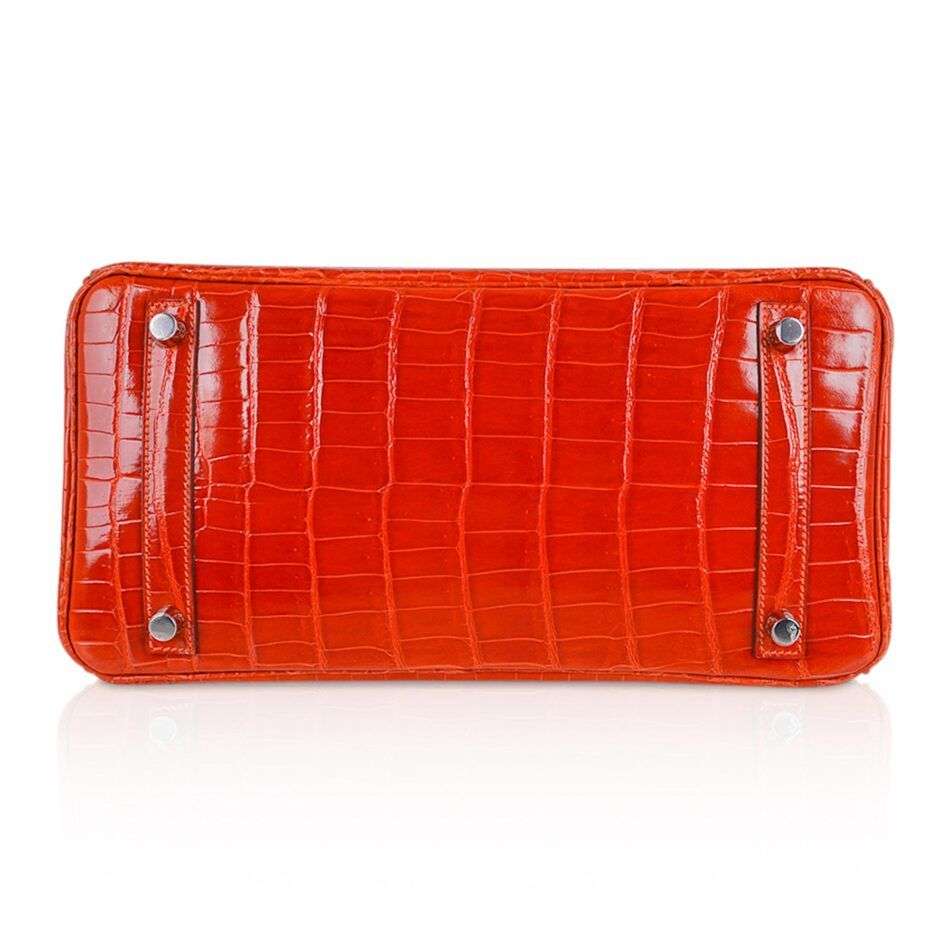
Some counterfeit shortcuts are easy to discover if you just turn the bag over and look at its base. Do the feet twist off? They won’t on a real Birkin. Are they shorter, wider or even just cheaper looking than on authentic bags?
Finally, the leather pattern can offer a valuable clue. It should, for example, run side to side along the length of the bag (as pictured above), not top to bottom. This is the kind of detail that could escape common counterfeiters.
(Article reviewed on the 13th of October, 2023)
